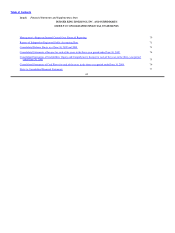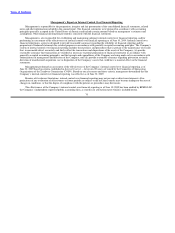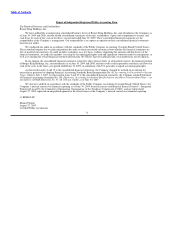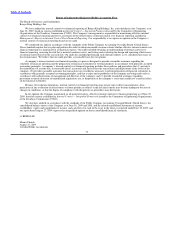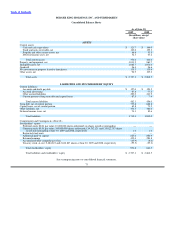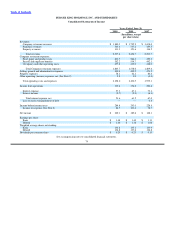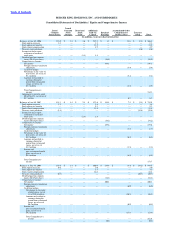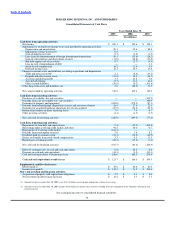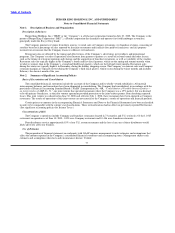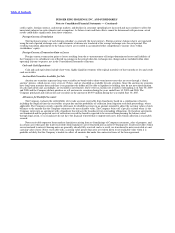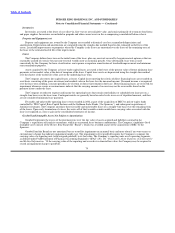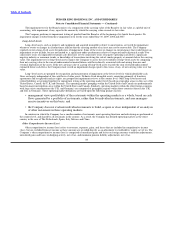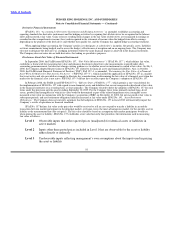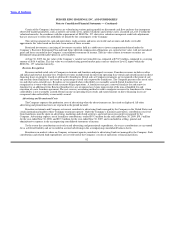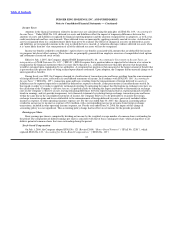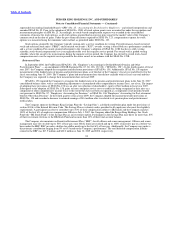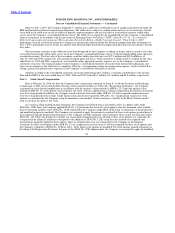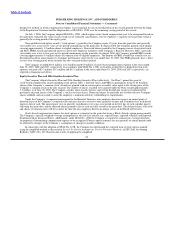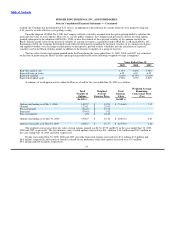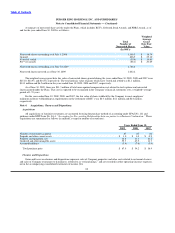Burger King 2009 Annual Report Download - page 81
Download and view the complete annual report
Please find page 81 of the 2009 Burger King annual report below. You can navigate through the pages in the report by either clicking on the pages listed below, or by using the keyword search tool below to find specific information within the annual report.
Table of Contents
BURGER KING HOLDINGS, INC. AND SUBSIDIARIES
Notes to Consolidated Financial Statements — (Continued)
credit, equity, foreign currency, and energy markets, and declines in consumer spending have increased and may continue to affect the
uncertainty inherent in such estimates and assumptions. As future events and their effects cannot be determined with precision, actual
results could differ significantly from these estimates.
Foreign Currency Translation
The functional currency of each foreign subsidiary is generally the local currency. Foreign currency balance sheets are translated
using the end of period exchange rates, and statements of income are translated at the average exchange rates for each period. The
resulting translation adjustments to the balance sheets are recorded in accumulated other comprehensive income (loss) within
stockholders’ equity.
Foreign Currency Transaction Gain or Losses
Foreign currency transaction gains or losses resulting from the re−measurement of foreign−denominated assets and liabilities of
the Company or its subsidiaries are reflected in earnings in the period when the exchange rates change and are included within other
operating (income) expenses, net in the Consolidated Statements of Income.
Cash and Cash Equivalents
Cash and cash equivalents include short−term, highly liquid investments with original maturities of three months or less and credit
card receivables.
Auction Rate Securities Available for Sale
Auction rate securities represent long−term variable rate bonds tied to short−term interest rates that are reset through a “dutch
auction” process, which occurs every seven to 35 days, and are classified as available for sale securities. Since the auction rate securities
have long−term maturity dates and there is no guarantee the holder will be able to liquidate its holding, they do not meet the definition
of cash equivalents and, accordingly, are recorded as investments. There were no auction rate securities outstanding as of June 30, 2009
and 2008 and the Company did not purchase or sell auction rate securities during the years ended June 30, 2009 and 2008. The
Company purchased and sold auction rate securities in the amount of $349.9 million during the year ended June 30, 2007.
Allowance for Doubtful Accounts
The Company evaluates the collectibility of its trade accounts receivable from franchisees based on a combination of factors,
including the length of time the receivables are past due and the probability of collection from litigation or default proceedings, where
applicable. The Company records a specific allowance for doubtful accounts in an amount required to adjust the carrying values of such
balances to the amount that the Company estimates to be net realizable value. The Company writes off a specific account when (a) the
Company enters into an agreement with a franchisee that releases the franchisee from outstanding obligations, (b) franchise agreements
are terminated and the projected costs of collections exceed the benefits expected to be received from pursuing the balance owed
through legal action, or (c) franchisees do not have the financial wherewithal or unprotected assets from which collection is reasonably
assured.
Notes receivable represent loans made to franchisees arising from re−franchisings of Company restaurants, sales of property, and
in certain cases when past due trade receivables from franchisees are restructured into an interest−bearing note. Trade receivables which
are restructured to interest−bearing notes are generally already fully reserved, and as a result, are transferred to notes receivable at a net
carrying value of zero. Notes receivable with a carrying value greater than zero are written down to net realizable value when it is
probable or likely that the Company is unable to collect all amounts due under the contractual terms of the loan agreement.
78


